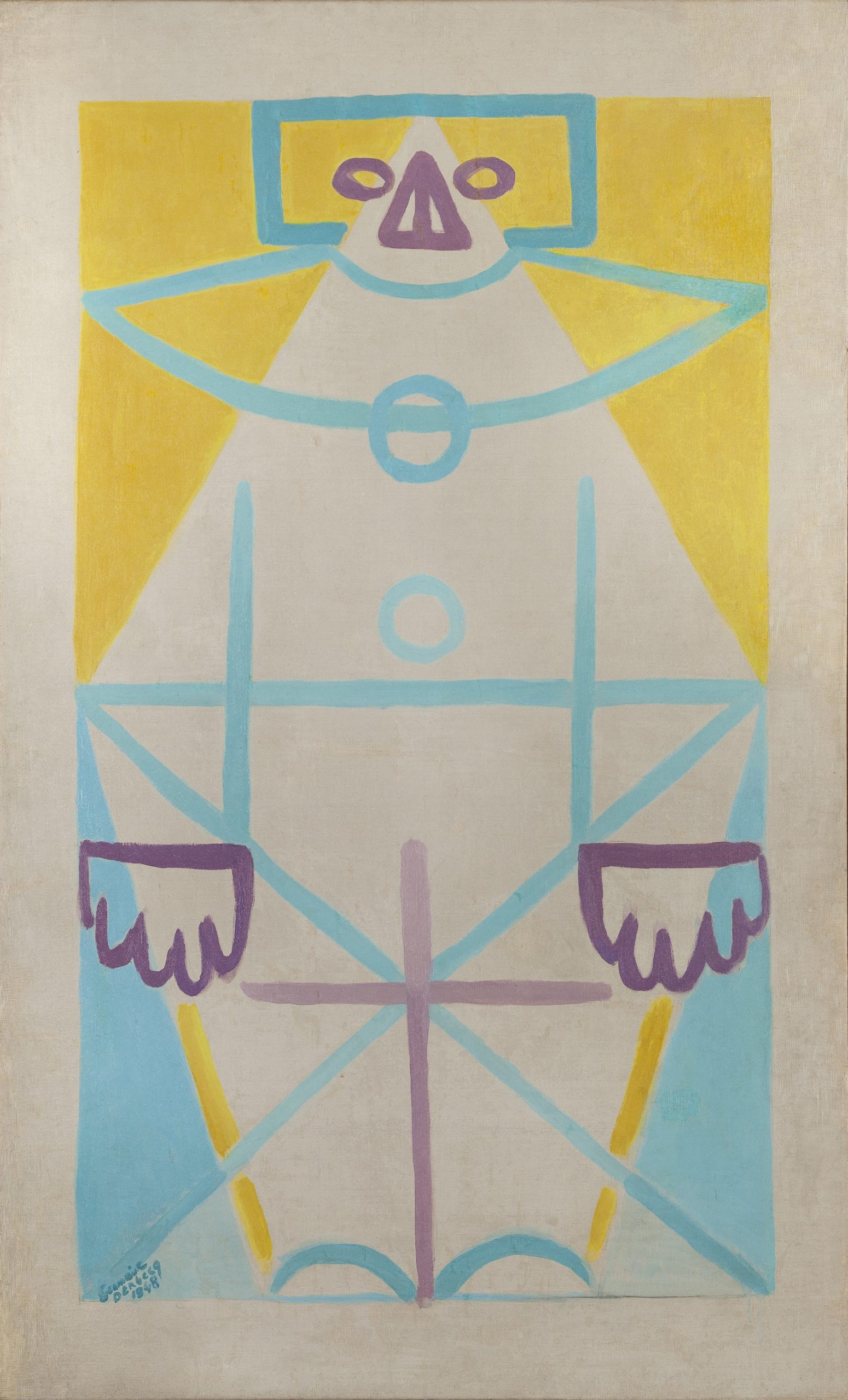Germaine Derbecq was born on January 3, 1899 in Paris, France. She studied at La Grande Chaumière and then at the Ranson Academy with André Lhote. In 1918 she exhibited for the first time at the Salon d’Automne. She met Pablo Curatella Manes and they married in 1922. In 1934, Jorge, her son, was born. In the 1930s she painted and exhibited frequently. During World War II she lived in Paris; between 1949 and 1950 in Denmark, Norway and Greece. In 1951 she settled permanently in Buenos Aires, and two years later she began her work as an art critic in the newspaper Le QuoWdien, a space that she would maintain for almost twenty years.
Between 1960 and 1963 she was curator and director of the Lirolay Gallery, then she joined the Guernica Gallery. In 1962 she held the exhibition “Pablo Manes and 30 Argentine artists of the new generation” at the Creuze Gallery in Paris. She was a jury member for prestigious awards, including the Braque Prize, organized by the French Embassy in Argentina. In 1970 she, together with Silvia de Ambrosini, Odile Barón Supervielle and Lidy Prati, founded the magazine Artinf.
She died in Buenos Aires on December 22, 1973.
Molded in the historical avant-garde, for her the conquest of the new in the territory of art was not a question of individuals, but of processes and transformations that necessarily have to radiate to social life. Her work always includes a pedagogical factor willing to point out paths for cultural policies.
Florence Qualina.
After leaving Paris and leaving behind a journey that took her through Denmark, Norway and Greece, Germaine Derbecq arrived in Buenos Aires at the dawn of the 1950s to become a key figure in an arastic field immersed in a furious process of modernization. From her place as a critic, what we would call today, a curator, she promoted a renewal of aesthetic inquiries on the local terrain. Between the 50s and early 70s, she acted from trenches such as the Lirolay gallery and the French newspaper Le quotidien and then the publication Artinf. Her interpellation was always directed to the urgency of that present, her voice is constantly agitated by that contingency.


 Derbecq Germaine
Derbecq Germaine